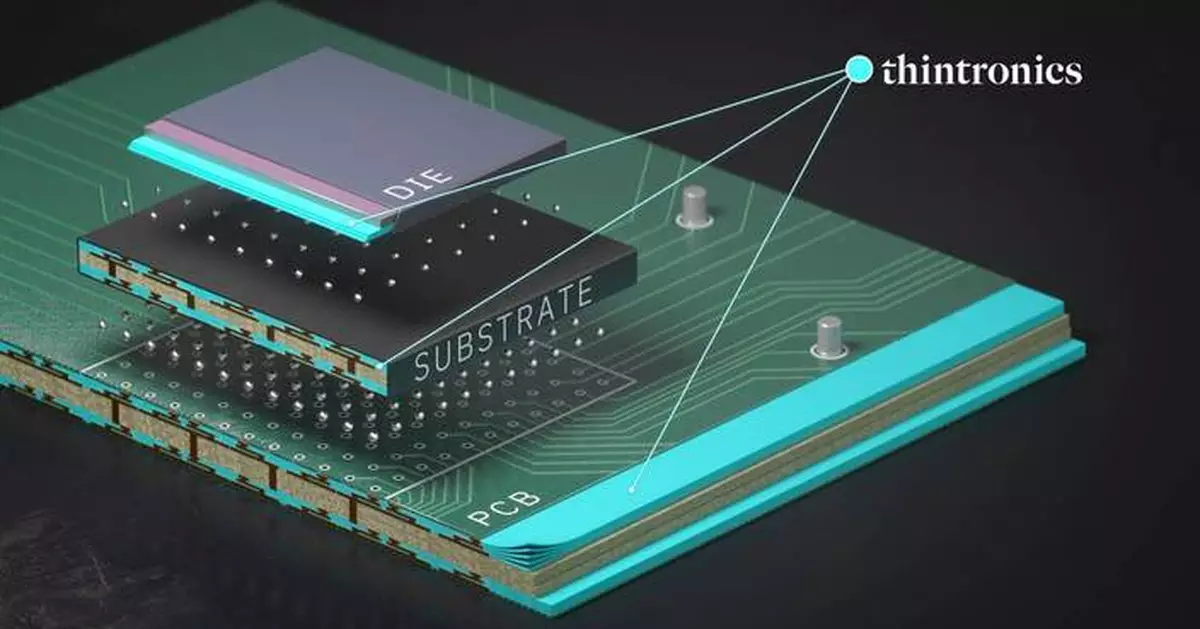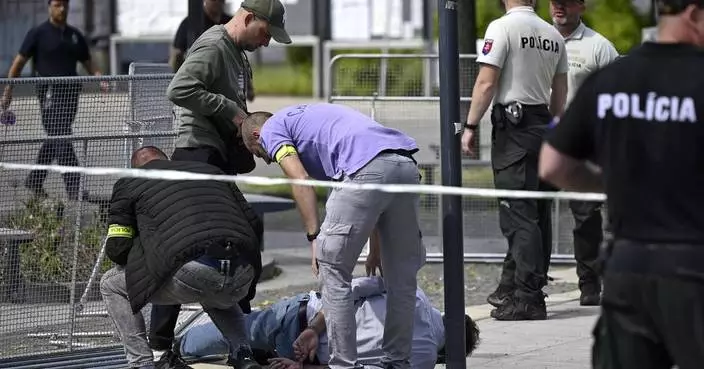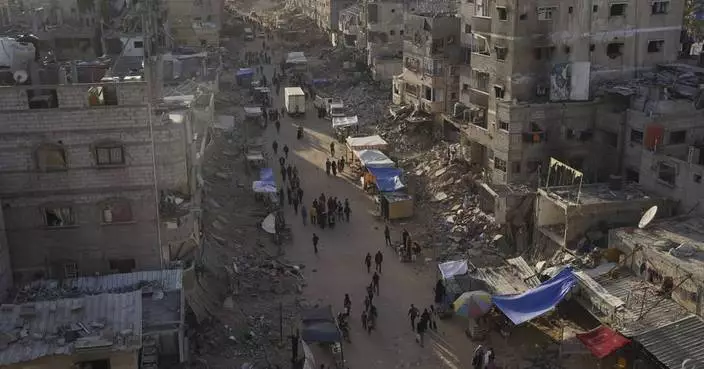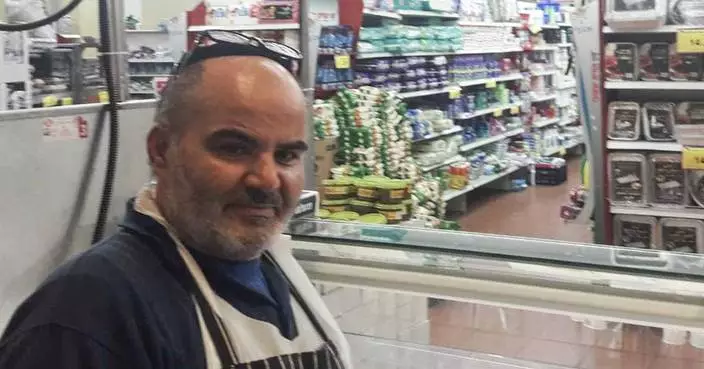BERKELEY, Calif.--(BUSINESS WIRE)--Apr 29, 2024--
Thintronics Inc. is a California-based electronic materials startup supplying high-performance insulators for emerging AI datacenter, networking, and RF/millimeter-wave (mmW) applications.
This press release features multimedia. View the full release here: https://www.businesswire.com/news/home/20240424926089/en/
Thintronics Inc. has raised a Series A funding round for $23M, led by Maverick Capital and Translink Capital. Series A funding will support commercialization of a novel insulator platform.
The company was founded on the idea that conventional assumptions guiding insulator material development limited the capacity of the industry to innovate. They have since developed a suite of high-performance materials that display electrical and mechanical characteristics that far outpace the state of the art. Thintronics’ CEO Stefan Pastine emphasizes that "the interconnect insulator is foundational to modern electronics; however, it has yet to be optimized to operate near the theoretical limit of insulation. Additionally, the supply chain is fragmented across multiple electronic architectures. It is our vision to optimize the insulator and unify it across the fabric."
Maverick Capital’s Kenny Safar is convinced that “to satisfy the explosive growth in demand for high performance compute, AI datacenters will need to incorporate faster data transfer speeds and wider bandwidth, while improving on power consumption and signal integrity. This is a formidable challenge that requires material redesign across all levels of the interconnect fabric, and we believe that Thintronics’ innovation in insulator film is a fundamental substrate-level enabler as AI servers adopt 224G standards and beyond. Additionally, Thintronics domestically sources all its components, and we believe this is a crucial step in onshoring advanced packaging technologies and ensuring that supply chains are vertically integrated in the U.S.”
Translink Capital’s Brendan Walsh is “thrilled to support the Thintronics team in realizing their vision to deliver novel materials solutions which elegantly solve critical electrical performance bottlenecks for the AI data center and other high-performance applications. As the industry grapples with the end of Moore’s Law, which has driven semiconductor scaling for decades, the increased adoption of multi-chip packaging and PCB-level solutions becomes paramount. Thintronics’ holistic solutions across technology disciplines are precisely what is urgently needed to realize higher performance from the global supply chain.”
To satisfy this growing demand Thintronics is entering the insulator market with technologies targeting chipsets, switches, and datacenter integrators for 224G links and beyond. For CTO Tristan El Bouayadi, "The combination of superior electrical and thermo-mechanical performance allows our customers to unlock new design possibilities and new applications in Networking, AI acceleration, RF mmW communication, and Radar. Additionally, by synthesizing ultra-thin dielectric layers, Thintronics enables form factor design optimization for Consumer and Infrastructure devices and products."
Pastine highlights that "Maverick and Translink bring deep connections and experience in our target entry markets, and a powerful ecosystem of partner companies here in the US and in Asia” and stresses “their expertise and networks in semiconductor and high-speed digital markets can ensure our success."
ABOUT THINTRONICS
Thintronics Inc. is reinventing interconnect insulator technologies to unlock next-generation computing, networking and wireless performance. The company's novel materials enable wider bandwidths, increased power efficiency, and highly integrated form factors for advanced computing and communication systems.
ABOUT MAVERICK CAPITAL
Maverick Capital is a global investment firm that has been investing in early-stage companies for over 30 years. By working with Maverick, early and growth stage entrepreneurs get the best of both worlds – a focused, agile team of venture partners – and the resources, reputation and relationships of a multi-billion-dollar manager.
ABOUT TRANSLINK CAPITAL
Headquartered in Palo Alto, California, Translink Capital is an early-stage venture capital firm investing in technology-based startups in the enterprise, infrastructure, sustainability, and robotics sectors. Founded in 2006, the firm has over $1 billion of assets under management and has been engineered to bring founders and their innovative companies together with a unique set of global resources and networks to support their journey to build foundational companies in their sector.


Thintronics unified insulator suite (Graphic: Thintronics)
WASHINGTON (AP) — The U.S. military finished installing a floating pier for the Gaza Strip on Thursday, with officials poised to begin ferrying badly needed humanitarian aid into the enclave besieged over seven months of intense fighting in the Israel-Hamas war.
The final, overnight construction sets up a complicated delivery process more than two months after U.S. President Joe Biden ordered it to help Palestinians facing starvation as food and other supplies fail to make it in as Israel recently seized the key Rafah border crossing in its push on that southern city on the Egyptian border.
Fraught with logistical, weather and security challenges, the maritime route is designed to bolster the amount of aid getting into the Gaza Strip, but it is not considered a substitute for far cheaper land-based deliveries that aid agencies say are much more sustainable. The boatloads of aid will be deposited at a port facility built by the Israelis just southwest of Gaza City and then distributed by aid groups.
Heavy fighting between Israeli troops and Palestinian militants on the outskirts of Rafah has displaced some 600,000 people, a quarter of Gaza’s population, U.N. officials say. Another 100,000 civilians have fled parts of northern Gaza now that the Israeli military has restarted combat operations there.
Pentagon officials said the fighting in Gaza wasn’t threatening the new shoreline aid distribution area, but they have made it clear that security conditions will be monitored closely and could prompt a shutdown of the maritime route, even just temporarily. Already, the site has been targeted by mortar fire during its construction and Hamas has threatened to target any foreign forces who “occupy” the Gaza Strip.
The “protection of U.S. forces participating is a top priority. And as such, in the last several weeks, the United States and Israel have developed an integrated security plan to protect all the personnel," said Navy Vice Adm. Brad Cooper, a deputy commander at the U.S. military's Central Command. "We are confident in the ability of this security arrangement to protect those involved.”
U.S. troops anchored the pier at 7:40 a.m. local time Thursday, the military's Central Command said, stressing that none of its forces entered the Gaza Strip and would not during the pier's operations.
“Trucks carrying humanitarian assistance are expected to begin moving ashore in the coming days,” the command said. “The United Nations will receive the aid and coordinate its distribution into Gaza.”
It wasn't immediately clear which U.N. agency would be involved.
Israeli forces will be in charge of security on the shore, but there are also two U.S. Navy warships near the area in the eastern Mediterranean Sea, the USS Arleigh Burke and the USS Paul Ignatius. Both ships are destroyers equipped with a wide range of weapons and capabilities to protect American troops off shore and allies on the beach.
Aid agencies say they are running out of food in southern Gaza and fuel is dwindling, which will force hospitals to shut down critical operations and halt truck deliveries of aid. The U.N. and others have warned for weeks that an Israel assault on Rafah would cripple humanitarian operations and cause a disastrous surge in civilian casualties.
More than 1.4 million Palestinians — half of Gaza’s population — have been sheltering in Rafah, most after fleeing Israel’s offensives elsewhere.
The first cargo ship loaded with 475 pallets of food left Cyprus last week to rendezvous with a U.S. military ship, the Roy P. Benavidez, which is off the coast of Gaza. The pallets of aid on the MV Sagamore were moved onto the Benavidez. The Pentagon said moving the aid between ships was an effort to be ready so it could flow quickly once the pier and the causeway were installed.
The installation of the pier several miles (kilometers) off the coast and of the causeway, which is now anchored to the beach, was delayed for nearly two weeks because of bad weather. The sea conditions made it too dangerous for U.S. and Israeli troops to secure the causeway to the shore, U.S. officials said.
Military leaders have said the deliveries of aid will begin slowly to ensure the system works. They will start with about 90 truckloads of aid a day through the sea route, and that number will quickly grow to about 150 a day. But aid agencies say that isn't enough to avert impending famine in Gaza and must be just one part of a broader Israeli effort to open land corridors.
Because land crossings could bring in all the needed aid if Israeli officials allowed, the U.S.-built pier-and-sea route “is a solution for a problem that doesn’t exist,” said Scott Paul, an associate director of the Oxfam humanitarian organization.
Biden used his State of the Union address on March 7 to order the military to set up a temporary pier off the coast of Gaza, establishing a sea route to deliver food and other aid. Food shipments have been backed up at land crossings amid Israeli restrictions and intensifying fighting.
Under the new sea route, humanitarian aid is dropped off in Cyprus where it will undergo inspection and security checks at Larnaca port. It is then loaded onto ships — mainly commercial vessels — and taken about 200 miles (320 kilometers) to the large floating pier built by the U.S. military off the Gaza coast.
There, the pallets are transferred onto trucks, driven onto smaller Army boats and then shuttled several miles (kilometers) to the floating causeway, which has been anchored onto the beach by the Israeli military. The trucks, which are being driven by personnel from another country, will go down the causeway into a secure area on land where they will drop off the aid and immediately turn around and return to the boats.
Aid groups will collect the supplies for distribution on shore, with the U.N. working with the U.S. Agency for International Development to set up the logistics hub on the beach.
Sabrina Singh, Pentagon spokeswoman, told reporters that the project will cost at least $320 million, including the transportation of the equipment and pier sections from the United States to the coast of Gaza, as well as the construction and aid delivery operations.
Associated Press writer Jon Gambrell in Dubai, United Arab Emirates, contributed to this report.

US military says Gaza Strip pier project is completed, aid to soon flow as Israel-Hamas war rages on
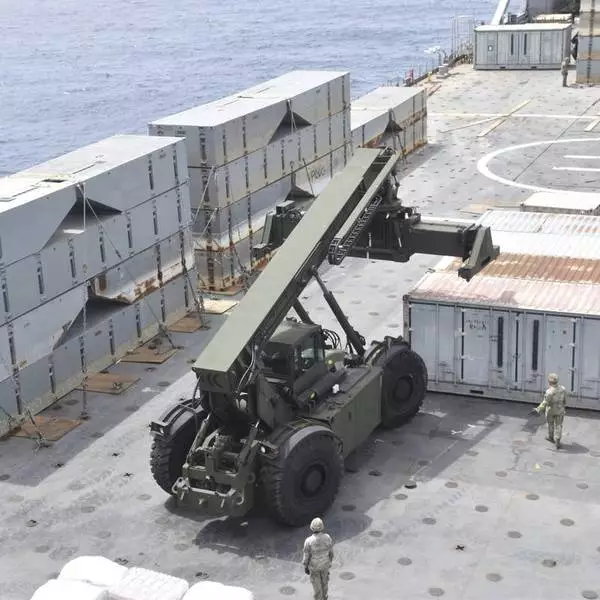
US military says Gaza Strip pier project is completed, aid to soon flow as Israel-Hamas war rages on

In this image provided by the U.S. Army, soldiers assigned to the 7th Transportation Brigade (Expeditionary) and sailors attached to the MV Roy P. Benavidez assemble the Roll-On, Roll-Off Distribution Facility (RRDF), or floating pier, off the shore of Gaza on April 26, 2024. The U.S. expects to have on-the-ground arrangements in Gaza ready for humanitarian workers to start delivering aid this month via a new U.S.-backed sea route for Gaza aid. An official with the U.S. Agency for International Development tells the AP that humanitarian groups expect to have their part of preparations complete by early to mid-month. (U.S. Army via AP)




